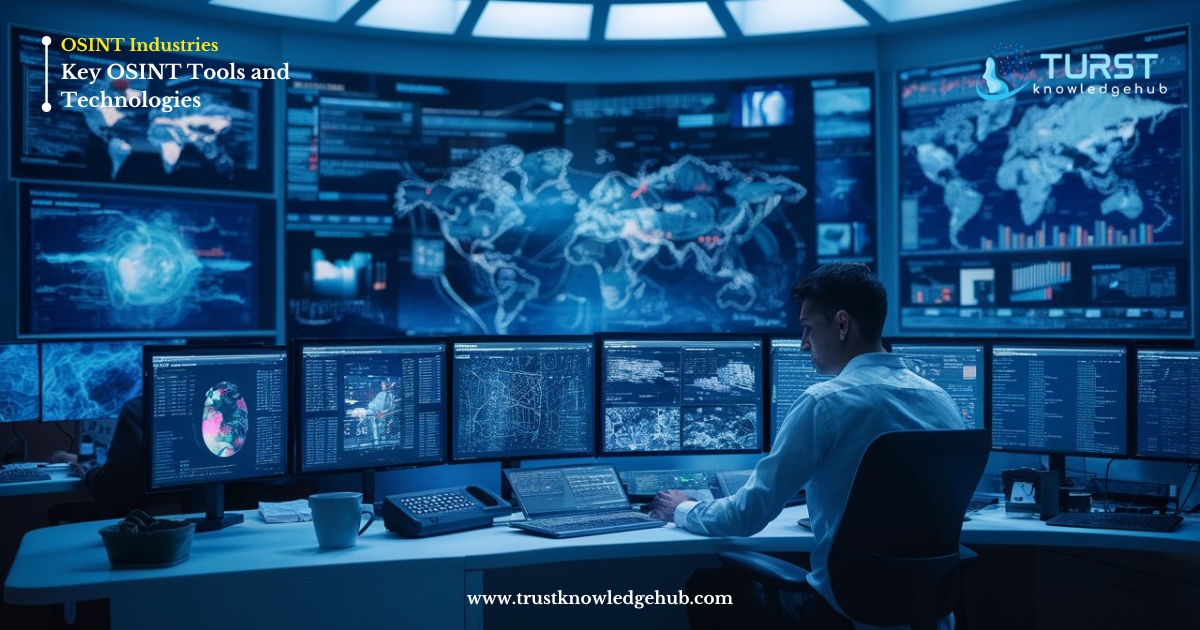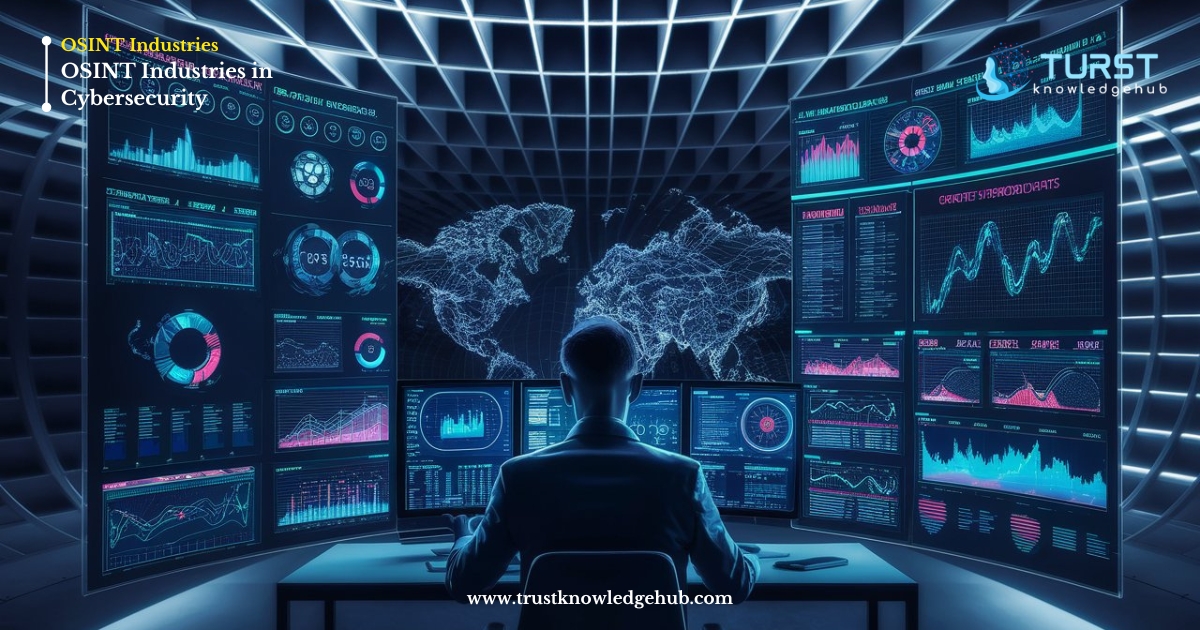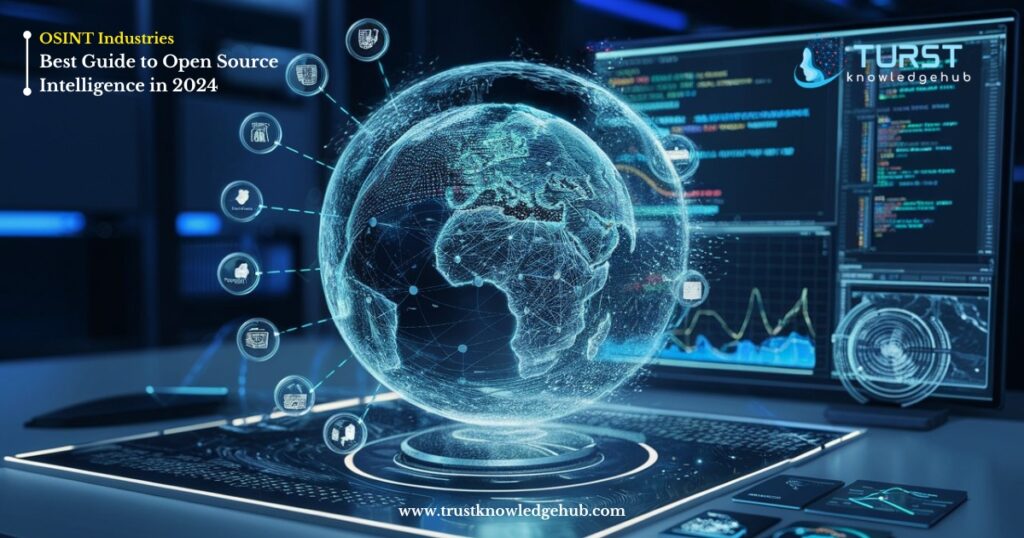This article will explore how OSINT Industries addresses the challenges of sourcing and analyzing open-source data, showcasing pioneering solutions and advanced technologies that transform public information into actionable intelligence for informed decision-making.
Introduction to Open Source Intelligence (OSINT Industries)
Definition and Importance of OSINT
Open Source Intelligence (OSINT) refers to the collection, analysis, and utilization of information that is publicly available. This includes data from a multitude of sources such as media, the internet, public government data, professional and academic publications, and more. OSINT is a critical tool for organizations and individuals seeking to make informed decisions based on comprehensive and verified information. Its importance lies in its ability to provide valuable insights without the need for covert operations, thus maintaining transparency and reducing risks associated with intelligence gathering.
Brief History of OSINT
OSINT has evolved significantly since its inception. Historically, intelligence agencies primarily relied on covert means to gather information. However, with the advent of the internet and the proliferation of digital information, the scope and accessibility of OSINT have expanded exponentially. Initially, OSINT was utilized in military and governmental contexts, but its applications have broadened to include sectors such as business, cybersecurity, and law enforcement.
Key Objectives of OSIN
The primary objectives of OSINT include supporting decision-making processes, enhancing situational awareness, and identifying potential threats or opportunities. OSINT aims to provide actionable intelligence through the collection and analysis of open-source data, ensuring that stakeholders can make well-informed decisions. This intelligence can be used to anticipate trends, understand competitive landscapes, and mitigate risks.
The Evolution of OSINT Industries

Early Uses and Applications
In its early days, OSINT was predominantly used by military and government agencies. The primary focus was on gathering information from newspapers, radio broadcasts, and other publicly available media to understand enemy movements and strategies. This traditional approach to OSINT laid the groundwork for more sophisticated methods and tools that we see today.
OSINT in the Digital Age
The digital revolution has transformed OSINT. The internet, social media, and digital databases have become treasure troves of information. Today, OSINT encompasses the analysis of vast amounts of data from various online sources, enabling real-time intelligence gathering and more nuanced insights. This digital shift has made OSINT more accessible and effective, allowing a broader range of users to leverage its benefits.
Recent Developments in OSINT Technology
Recent advancements in technology have further enhanced OSINT capabilities. Tools leveraging Artificial Intelligence (AI) and Machine Learning (ML) can now automate data collection, processing, and analysis, making OSINT more efficient and accurate. Additionally, developments in geospatial technologies and data visualization have revolutionized how intelligence is interpreted and presented, providing more detailed and actionable insights.
Core Principles of OSINT Industries
Transparency and Accountability
Transparency and accountability are fundamental principles of OSINT. Since OSINT relies on publicly available information, it operates within the bounds of legality and ethical standards. This transparency ensures that the methods and sources used in intelligence gathering can be scrutinized and verified, fostering trust and credibility.
Ethical Considerations in OSINT
Ethical considerations are paramount in OSINT. Practitioners must navigate the fine line between gathering useful information and respecting privacy rights. Adhering to ethical standards ensures that OSINT is conducted responsibly, avoiding harm to individuals and maintaining the integrity of the intelligence process.
Legal Aspects of OSINT
OSINT must comply with legal frameworks governing the collection and use of information. This includes adhering to data protection laws, intellectual property rights, and other regulations that dictate how publicly available information can be utilized. Understanding and navigating these legal aspects is crucial for effective and lawful OSINT practices.
Privacy Concerns and Solutions
Privacy concerns are a significant challenge in OSINT. To address these, practitioners must implement robust data protection measures and ensure that personal information is handled with care. Anonymization techniques and strict access controls can help mitigate privacy risks, ensuring that OSINT activities do not infringe on individual rights.
OSINT Industries Digital Footprint
Open Source Intelligence (OSINT) has become indispensable in today’s data-driven world. OSINT industries specialize in extracting actionable insights from publicly available information, playing a crucial role in cybersecurity, national security, and competitive intelligence. By meticulously analyzing the OSINT Industries Digital Footprint of individuals and entities, these industries can identify patterns, track behaviors, and forecast trends.
The breadth of OSINT industries spans various online sources, including social media, blogs, forums, and databases. This wide-ranging surveillance enables analysts to piece together disparate data points into a coherent narrative. Understanding the OSINT Industries Digital Footprint is pivotal for identifying potential threats and opportunities. For instance, cybersecurity firms use OSINT to detect data breaches and prevent cyber-attacks, while law enforcement agencies leverage it to track criminal activities and gather evidence.
Furthermore, corporations utilize OSINT industries to gain a competitive edge. By monitoring competitors’ online activities and market trends, businesses can make informed strategic decisions. The ability to interpret the OSINT Industries Digital Footprint also aids in reputation management, as companies can swiftly address any negative information circulating online.
In essence, OSINT industries serve as the vanguard of modern intelligence gathering. Their proficiency in deciphering the OSINT Industries Digital Footprint underscores their value in an increasingly interconnected and transparent digital landscape
OSINT Industries Alternative
Open Source Intelligence (OSINT) has emerged as a formidable asset in the information age. OSINT industries are dedicated to the collection and analysis of publicly accessible data, playing a pivotal role in sectors such as cybersecurity, law enforcement, and corporate intelligence. These industries provide an OSINT Industries Alternative to traditional intelligence methods, harnessing the vast expanse of the internet to gather critical insights.
The scope of OSINT industries encompasses a multitude of online sources, including social media, news outlets, forums, and databases. By meticulously sifting through this information, analysts can uncover patterns and trends that would otherwise remain hidden. This OSINT Industries Alternative approach to intelligence gathering is not only cost-effective but also time-efficient, enabling rapid responses to emerging threats.
In the realm of cybersecurity, OSINT industries are invaluable. They identify potential vulnerabilities and predict cyber threats by monitoring hacker forums and dark web activities. Law enforcement agencies also benefit from OSINT by tracking criminal activities and gathering evidence from open sources, offering a powerful OSINT Industries Alternative to covert operations.
Corporations leverage OSINT industries to gain a competitive edge. By analyzing market trends and competitor activities, businesses can make informed strategic decisions. This OSINT Industries Alternative intelligence method provides a comprehensive understanding of the market landscape, essential for staying ahead in a competitive environment.
In summary, **OSINT industries** offer a versatile and efficient OSINT Industries Alternative to conventional intelligence methods. Their ability to harness publicly available data underscores their importance in navigating the complexities of the modern digital landscape.
Types of Open Source Intelligence
Media and News Analysis
Media and news analysis involves monitoring and analyzing information from newspapers, television, radio, and online news sources. This type of OSINT helps organizations stay informed about current events, public opinion, and emerging trends, enabling proactive decision-making.
Social Media Intelligence (SOCMINT)
SOCMINT focuses on extracting and analyzing data from social media platforms. This includes tracking conversations, identifying influencers, and understanding sentiment. SOCMINT is particularly valuable for brand management, crisis response, and understanding public perceptions.
Geospatial Intelligence (GEOINT)
GEOINT involves the analysis of geographic information from sources such as satellite imagery, maps, and geospatial data. This type of intelligence is crucial for understanding physical locations, monitoring environmental changes, and supporting operations that require spatial awareness.
Human Intelligence (HUMINT)
HUMINT refers to information gathered from human sources. While traditionally associated with covert intelligence, HUMINT in the context of OSINT involves collecting insights from public interactions, interviews, and other direct human engagements. It complements other types of intelligence by providing context and qualitative data.
Technical Intelligence (TECHINT)
TECHINT encompasses the collection and analysis of technical data from a variety of sources, including patents, technical publications, and industry standards. This type of intelligence is essential for understanding technological advancements, assessing capabilities, and identifying potential innovations.
Key OSINT Tools and Technologies

Web Scraping Tools
Web scraping tools are essential for extracting large volumes of data from websites. These tools automate the collection of information, enabling efficient and comprehensive data gathering from various online sources.
Social Media Monitoring Tools
Social media monitoring tools track and analyze activity on social media platforms. They help organizations understand public sentiment, monitor brand reputation, and identify emerging trends and threats in real-time.
Geospatial Analysis Software
Geospatial analysis software allows for the visualization and analysis of geographic data. These tools are used to interpret satellite imagery, create maps, and conduct spatial analysis, supporting a wide range of applications from environmental monitoring to urban planning.
Data Aggregation and Visualization Tools
Data aggregation and visualization tools consolidate data from multiple sources and present it in an easily understandable format. These tools enhance the ability to interpret complex information, identify patterns, and communicate findings effectively.
OSINT Methodologies
Collection Techniques
Effective OSINT requires robust collection techniques. This includes identifying relevant sources, using automated tools to gather data, and employing advanced search strategies to ensure comprehensive coverage.
Data Verification and Validation
Verification and validation are critical steps in the OSINT process. Practitioners must ensure that the data collected is accurate, reliable, and relevant. This involves cross-referencing sources, checking for consistency, and employing fact-checking methods.
Analysis and Interpretation Methods
Analysis and interpretation involve transforming raw data into actionable intelligence. This requires analytical skills, critical thinking, and the use of specialized tools to identify patterns, trends, and insights that inform decision-making.
Reporting and Dissemination Strategies
Effective reporting and dissemination are crucial for ensuring that intelligence reaches the right audience. This involves creating clear and concise reports, using visual aids to enhance understanding, and ensuring timely delivery of intelligence to stakeholders.
Sources of Open Source Intelligence
Public Databases and Archives
Public databases and archives are rich sources of historical and current information. These repositories provide access to government records, legal documents, statistical data, and other valuable resources for OSINT practitioners.
Government and Institutional Reports
Government and institutional reports offer authoritative insights on a wide range of topics. These reports, often published by agencies, think tanks, and research institutions, provide in-depth analysis and data that support OSINT efforts.
News Outlets and Media Sources
News outlets and media sources are indispensable for staying updated on current events and public discourse. Monitoring these sources helps identify emerging trends, track developments, and understand public sentiment.
Academic Publications
Academic publications provide rigorously researched and peer-reviewed information. These sources are valuable for gaining insights into specific topics, understanding theoretical frameworks, and accessing cutting-edge research.
Social Media Platforms
Social media platforms are dynamic sources of real-time information. They offer insights into public opinion, trending topics, and social movements, making them essential for SOCMINT activities.
Satellite and Aerial Imagery
Satellite and aerial imagery provide visual intelligence on geographic and environmental changes. This type of data is crucial for monitoring natural disasters, infrastructure developments, and other spatial phenomena.
OSINT Industries in Cybersecurity

Identifying Cyber Threats
OSINT plays a vital role in identifying cyber threats. By monitoring public forums, social media, and dark web activities, cybersecurity professionals can detect potential threats and vulnerabilities before they materialize.
Monitoring Dark Web Activities
The dark web is a significant source of intelligence for cybersecurity. OSINT tools and techniques are used to monitor illicit activities, track threat actors, and gather information on emerging cyber threats.
Incident Response and Forensics
In the aftermath of a cyber incident, OSINT supports forensic investigations by providing additional context and information. This helps in understanding the scope of the incident, identifying perpetrators, and preventing future occurrences.
Enhancing Threat Intelligence
OSINT enhances threat intelligence by providing a broader view of the threat landscape. It complements other forms of intelligence by offering insights into trends, threat actor behaviors, and potential attack vectors.
OSINT Industries for Business and Competitive Intelligence
Market Analysis and Trends
OSINT is invaluable for market analysis and understanding industry trends. Businesses can use OSINT to track market developments, identify emerging opportunities, and make strategic decisions.
Competitor Monitoring
Monitoring competitors is a key application of OSINT. By analyzing public information about competitors, businesses can gain insights into their strategies, strengths, weaknesses, and market positioning.
Brand Reputation Management
OSINT tools help businesses manage their brand reputation by monitoring public sentiment, tracking mentions, and identifying potential issues. This allows for proactive reputation management and crisis response.
Customer Insights and Feedback
OSINT provides valuable insights into customer preferences, behaviors, and feedback. By analyzing social media, reviews, and other public sources, businesses can better understand their customers and improve their offerings.
OSINT Industries in Law Enforcement and National Security
Crime Investigation and Prevention
Law enforcement agencies use OSINT to investigate crimes and prevent criminal activities. By analyzing public data, agencies can identify suspects, track movements, and gather evidence.
Counterterrorism Efforts
OSINT supports counterterrorism efforts by monitoring extremist activities, identifying potential threats, and providing actionable intelligence to prevent attacks.
Border Security and Immigration Control
Border security and immigration control benefit from OSINT by using public information to track movements, verify identities, and monitor potential security threats.
Surveillance and Monitoring
OSINT enhances surveillance and monitoring efforts by providing additional layers of information. This supports the identification of suspicious activities and improves situational awareness.
Case Studies of OSINT Industries in Action
Successful OSINT Operations
Case studies of successful OSINT operations highlight the effectiveness of open-source intelligence. These examples demonstrate how OSINT has been used to uncover critical information, support decision-making, and achieve objectives.
Lessons Learned from OSINT Failures
Examining failures in OSINT operations provides valuable lessons. Understanding what went wrong and why helps improve future practices and avoid similar pitfalls.
Innovations in OSINT Practices
Innovations in OSINT practices continually enhance its effectiveness. These advancements include new tools, methodologies, and approaches that improve the accuracy and efficiency of intelligence gathering.
Future Trends in OSINT Industries
Artificial Intelligence and Machine Learning
AI and ML are set to revolutionize OSINT by automating data collection, analysis, and interpretation. These technologies enhance the ability to process large volumes of data and identify patterns that human analysts might miss.
Integration of Big Data Analytics
The integration of big data analytics with OSINT allows for the processing and analysis of vast amounts of information. This enhances the ability to identify trends, correlations, and insights that inform decision-making.
Advancements in Geospatial Technologies
Advancements in geospatial technologies are expanding the capabilities of GEOINT. Improved satellite imagery, drones, and other technologies provide more detailed and accurate geographic information.
Emerging Ethical and Legal Challenges
As OSINT evolves, it faces emerging ethical and legal challenges. These include issues related to privacy, data protection, and the ethical use of publicly available information. Addressing these challenges is crucial for the responsible use of OSINT.
Building an OSINT Strategy
Defining Objectives and Scope
Building an effective OSINT strategy starts with defining clear objectives and scope. This requires comprehending the necessary information, its purpose, and its intended application.
Selecting the Right Tools and Technologies
Choosing the right tools and technologies is essential for effective OSINT. This includes selecting tools that align with the objectives, are user-friendly, and provide the necessary capabilities for data collection and analysis.
Developing a Data Collection Plan
A well-structured data collection plan ensures that all relevant information is gathered systematically. This involves identifying sources, defining collection methods, and establishing timelines.
Ensuring Data Security and Privacy
Ensuring data security and privacy is critical in OSINT. This includes implementing robust security measures, adhering to data protection regulations, and ensuring that sensitive information is handled appropriately.
Training and Certification in OSINT Industries
Key Skills for OSINT Professionals
OSINT professionals need a range of skills, including analytical thinking, technical proficiency, and ethical judgment. Continuous learning and skill development are crucial for staying effective in this field.
Leading OSINT Certification Programs
Certification programs provide formal recognition of OSINT expertise. Leading programs offer comprehensive training in OSINT methodologies, tools, and best practices, ensuring that professionals are well-equipped to conduct effective intelligence operations.
Resources for Continuous Learning
Continuous learning is essential for OSINT professionals. This includes staying updated on new tools, techniques, and trends through courses, workshops, and other educational resources.
Community and Networking Opportunities
Engaging with the OSINT community provides valuable networking and collaboration opportunities. This includes participating in forums, attending conferences, and joining professional organizations.
OSINT Industries Best Practices
Maintaining Ethical Standards
Maintaining ethical standards is paramount in OSINT. Practitioners must adhere to ethical guidelines to ensure that their activities are responsible and do not harm individuals or organizations.
Ensuring Data Accuracy and Reliability
Ensuring the accuracy and reliability of data is critical for effective OSINT. This involves thorough verification and validation processes to ensure that the information used is credible and trustworthy.
Balancing Speed and Thoroughness
Balancing speed and thoroughness is a key challenge in OSINT. While timely intelligence is important, it must not come at the expense of accuracy and reliability. Practitioners must find a balance that ensures both.
Adapting to Rapid Technological Changes
The rapid pace of technological change requires OSINT practitioners to continually adapt. Staying updated on new tools, methodologies, and trends is essential for maintaining effectiveness and relevance.
Challenges in OSINT Industries
Information Overload and Noise
Information overload and noise are significant challenges in OSINT. Practitioners must develop strategies to filter out irrelevant information and focus on what is important, ensuring that intelligence is actionable and useful.
Dealing with Disinformation and Misinformation
Disinformation and misinformation pose serious challenges for OSINT. Practitioners must employ rigorous verification techniques and critical thinking to identify and mitigate the impact of false information.
Technical and Operational Constraints
Technical and operational constraints can limit the effectiveness of OSINT. This includes limitations in tools, data access, and resources. Overcoming these constraints requires innovative solutions and effective resource management.
Legal and Ethical Dilemmas
Legal and ethical dilemmas are inherent in OSINT. Practitioners must navigate complex legal frameworks and ethical considerations to ensure that their activities are lawful and responsible.
The Role of OSINT Industries in Crisis Management
Natural Disasters and Humanitarian Aid
OSINT plays a crucial role in crisis management during natural disasters and humanitarian aid operations. It provides real-time information on affected areas, helping to coordinate response efforts and allocate resources effectively.
Political Instability and Conflict Zones
In areas of political instability and conflict, OSINT provides valuable intelligence on developments, threats, and humanitarian needs. This supports decision-making and helps protect vulnerable populations.
Public Health Emergencies
During public health emergencies, OSINT offers critical insights into disease outbreaks, public responses, and healthcare needs. This information is essential for effective response and mitigation efforts.
Infrastructure Failures and Accidents
OSINT supports the management of infrastructure failures and accidents by providing timely information on the extent of damage, impact on populations, and response requirements.
OSINT Industries Community and Collaboration
Key Organizations and Networks
Key organizations and networks play a pivotal role in the OSINT community. They provide platforms for collaboration, knowledge sharing, and professional development, enhancing the overall effectiveness of OSINT practices.
Collaborative Platforms and Initiatives
Collaborative platforms and initiatives foster innovation and cooperation in OSINT. These platforms enable practitioners to share tools, techniques, and insights, driving continuous improvement in the field.
Sharing Knowledge and Resources
Sharing knowledge and resources is essential for advancing OSINT. This includes publishing research, developing open-source tools, and providing training and education to build a robust and informed community.
Promoting Innovation and Research
Promoting innovation and research in OSINT ensures that the field continues to evolve. This involves supporting new ideas, investing in technological advancements, and encouraging interdisciplinary collaboration.
The Global Impact of OSINT Industries
Enhancing International Cooperation
OSINT enhances international cooperation by providing shared intelligence that supports collective security and development goals. This fosters collaboration among nations and helps address global challenges.
Supporting Sustainable Development Goals
OSINT supports sustainable development goals by providing data and insights that inform policy decisions, monitor progress, and identify areas for intervention. This contributes to global efforts to achieve sustainability and equity.
Addressing Global Security Challenges
OSINT is a vital tool in addressing global security challenges. It provides timely and actionable intelligence that helps mitigate threats, support peacekeeping efforts, and enhance global stability.
Empowering Communities and Individuals
OSINT empowers communities and individuals by providing access to information and tools that enhance awareness, resilience, and self-determination. This democratization of intelligence supports informed decision-making and community development.
Conclusion
The Evolving Landscape of OSINT
The landscape of OSINT is continually evolving, driven by technological advancements and changing needs. Staying adaptive and innovative is crucial for maintaining its relevance and effectiveness.
The Future Potential of Open Source Intelligence
The future potential of OSINT is immense, with advancements in AI, big data, and geospatial technologies promising to further enhance its capabilities. Continued investment in these areas will unlock new possibilities for intelligence gathering and analysis.
Final Thoughts and Reflections
As OSINT Industries continues to grow and evolve, it remains a powerful tool for informed decision-making across various sectors. Embracing its potential while navigating its challenges will ensure that OSINT remains a cornerstone of modern intelligence practices.




